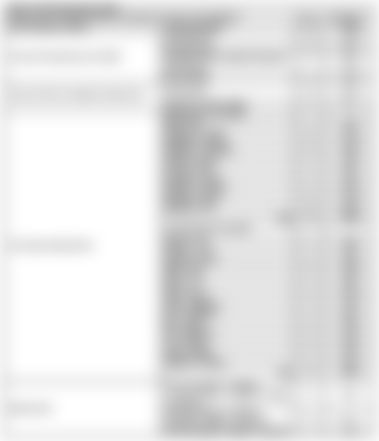INTRODUCTION
Locally known as “uga” in Heligaynon or “tuyong isda” in Tagalog dried fish plays an important role in providing and maintaining income especially for women in the fisheries sector. An important value-added fishery product that consumed both locally and abroad it is the only area in the fishery sector where women can position themselves, hence, this industry is mostly dominated by women (Amascual, Panganoron, Irene, and Pajarillo 2020; Tierra, 2019). Dried fish plays a vital role on Filipino diets for its taste, nutritional value, and affordability. In fact, the sun drying method is considered as the most traditional, conventional and economical method of salted fish processing in the Philippines (Gabriel and Alano-Budiao, 2014). As the simplest and oldest preserving method, dried fish is the common livelihood activity of near-shore villagers in the country, making the Philippines rank second to Indonesia as the largest producer of dried fish in Southeast Asia (Gabriel and Alano-Budiao, 2014; Espejo-Hermes, 2004; Soon-Eong and Sen-Min, 2002).
Brgy. Agusian, on the other hand, is known as one of the major fish landing port in the province of Negros Occidental. One of the barangay in Himamaylan City it has a population of 11, 882 as determined by the 2020 Census which represents 10.22% of the total population of the City. Roughly, 64% of the barangay population are the economically active population with majority either directly or indirectly participates in fisheries sector. Such direct participation may include capture fisheries, aquaculture and fish processing. Meanwhile, indirect participation includes fish mongering, laborers and selling of peripheral equipment integral to fisheries.
Just like other coastal villages in the Philippines, fish drying is not new in Brgy. Aguisan. This industry serves as stabilizers in the utilization, distribution and marketing of fish resources. Anecdotal interviews with key informants reveal that many fishes, usually the one they classified as rejects and those caught in abundance and prices are affected by too much supply are sell to dry fish processors to minimize losses. On the other hand, dry fish processors were attracted because drying as a means of preservation uses simple methods with low-capital investments and their product is acceptable to all income groups. Aguisanons were venturing in dried fish industry due to the high market demands for dried fish.
Statement of the problem. As this study is focused on the status of fish drying industry in Bgry. Aguisan, Himamaylan City the purpose is to described the practices, problems, prospects and policy in the fish drying industry. The data that gathered and analyzed served as basis to forward intervention proposals for dry fish processors in fisheries entrepreneurship. Specifically, this study answered the following questions:
1. What were the profile of the dry fish processors when grouped according to household profile and industry profile;
2. What were the practices observed by the dry fish processors in Brgy. Aguisan, Himamaylan City?
3. What are the problems met by dry fish processors that hinder the development of the fish drying industry in Brgy. Aguisan, Himamaylan City? and
4. What were dry fish processors Research and Development prospects for the dry fish industry in Brgy. Aguisan, Himamaylan City.
METHODOLOGY
Research Design and Locale of the Study. This study utilized a descriptive research design to statistically calculate and interpret the result of the gathered data describing profile, practices, problems, prospects, and policy of the dry fish industry in Brgy. Aguisan, Himamaylan City, Negros Occidental.
Sample Units. A total of 19 accessible dry fish processors from Brgy. Aguisan, Himamaylan City were surveyed. The interview started with the identification of key informants (KIs) who listed the names of dry fish processors. Snowball sampling technique was utilized – that is identifying the names from the list and relying from the referrals of one to the next dry fish processor. The willingness to cooperate and the participants’ knowledge about dry fish was considered primarily for this survey.
Instrument. Primarily, the data from anecdotal conversations with the key informants (KIs) and from the reviewed literatures formed the basis to develop the researcher-made instrument. The Part 1 of the four-part instrument gathered the information on the dry fish processors and dry fish industry profiles in Brgy. Aguisan, Himamaylan City, Negros Occidental. Dry processors profile was asked in terms of number of persons in a household, number of persons in household that involves in fish drying business, monthly income, other sources of income, years in fish drying business, and membership to organization. On the other hand, dry fish industry profile was asked in terms of type of business ownership, sources of fish as raw materials, sources of other raw materials, dry fish peak market demands, market channels, and fish species processed and seasonability.
The Part 2 of the instrument that comprise of 24 item statements gathered data on the practices observed by the dry fish processors. On the other hand, Part 3 comprise of 13 item statements that gathered data on the problems met that hinders the development of fish drying industry. While, Part 4 comprise of 9 item statements that gathered the Research and Development prospects for the dry fish industry in Brgy. Aguisan, Himamaylan City.
In giving their honest opinion to the item statements survey in Part 2, 3 and 4, the dry fish processors were asked to put a check on the numbers 1, 2, 3, 4, and 5 provided on the right columns of every item statements. In the five-point Likert-type scale, the dry fish processors answer of 1 was interpreted “highly disagree” while the 5, “highly agree”.
A 5- member panel composed of research faculty members of the College of Fisheries in CHMSC reviewed every item in the questionnaire. Subjecting the survey instrument to Good and Scates validation, a mean value of 4.48 suggests that the instrument was valid. After pilot testing to 10 dry fish processors in Brgy. Enclaro, Binalbagan, Negros Occidental, the Chronbach’s Alpha test run in every sub-item in Part 2, Part 3 and Part 4 yielded between 0.72; 0.82 and 0.78 alpha values respectively, suggesting that the instrument was reliable.
Data analysis. The dry fish processors and dry fish industry profile were analyzed using the mean, frequency and percentage distribution. Practices observed of the dry fish processors, problems met that hinders the development of fish drying industry, and the Research and Development prospects were analyzed using weighted mean and standard deviation. The range of the scale used to verbally interpret the scores were: 1.00 – 1.80, highly disagree; 1.81 – 2.60, disagree; 2.61 – 3.40, either disagree or agree, 3.41 – 4.20, agree; and 4.21 – 5.00, highly agree.
RESULTS AND DISCUSIONS
Fish processor’s household profile. The data showed that the number of persons per dry fish processors household ranges from 2 to 9 members with an average of 5 members per dry fish processors household. As to the involvement, data revealed that at least 1 up to 4 persons with an average of 2 person per household engage in fish drying process. When asked in terms of years in fish drying industry, some household started to engage in the industry 3 years ago while others were already in the industry for almost 35 years. This gives an average of 14 years engagement in the industry for every dry fish processor household. In terms of monthly income, 9 or 47.37% of the households indicates their monthly income between Php10,001.00 to Php20,000.00 followed by 8 or 42.11% that indicated to had a monthly income of less than Php10,000.00 a month. Meanwhile 1 or 5.26% households indicated their monthly income between Php20,001.00 to Php30,000.00 and also, another 1 or 5.26% indicates a monthly income above Php30,000.00 a month.
When dry fish processors were asked about their other source of household livelihood income, 4 or 21.05% of them indicated that they engage in fish mongering or fish selling. Another 3 or 15.79% of them engage in fishing while 2 or 10.53% engage in sundry store businesses. However, 10 or 52.63% of the dry fish households indicated to had no other source of income except for fish drying. In terms of monthly income from other sources of income, 7 or 36.84% indicated to earn less than Php10,000.00 a month while 2 or 10.52% indicated to earn between Php10,001.00 to Php20,000.00 a month. None among the dry fish processors were members of any fisheries and business associations. Table 1 shows the fish dry processor’s household profile.

Dry fish industry profile. All of the dry fish processors in Brgy. Aguisan, Himamaylan City engage in the industry as sole proprietorship. As to the source of fish as raw materials, 13 or 68.42% source it from Aguisan fish landing site. Their other sources include sourcing the fish from towns of Pulupandan and Hinigaran (7 or 36.84%), buying the fish directly from the locale fishermen (6 or 31.58%), and bulk fish carrier (4 or 21.05%). In terms of other raw materials such as salt, they source it from local market (12 or 63.10%) and supplier from other localities (9 or 47.37%). Dry fish processors responses vary when they asked regarding the peak and lowest demand of dried fish. This variation may imply on the fish species availability they are processing in a certain given time of months. On the other hand, 10 or 52.63% of the dry processors market channels begins from fish dry processors to middleman to commission agents to wholesalers to retailers before reaching the consumers while 8 or 42.11% of them responded that their market channels begin from fish dry processors to middleman to wholesalers to retailers before reaching the consumers. Only 1 or 5,26% of the dry fish processor responded that their products begin from dry processor to retailers before reaching the consumers. Table 2 shows the fish drying industry profile.

There are 14 species of fish that the dry processors are processing for dried fish and this were tilapia, sapsap, tabagak, guno, galunggong, mixed fished, tuloy,taminsot, balantyong, lilang, gusaw, liwit, talangtalang, and dagol. These fishes were commonly seasonal and caught in bulk. Table 3 shows the fish species processed for drying and its seasonality in Brgy. Aguisan, Himamaylan City.



Practices observed by the dry fish processors in the fish drying industry. The dry fish processors were asked to give their honest opinion on the practice’s sub-variables identified in this study. The sub mean value of 4.15 (+0.58), 4.33 (+0.70), and 3.38(+0.86) shows that dry fish processors rated “agree”, “disagree” and “agree” to identified handling, processing, and management practices sub-variables identified in this study, respectively. This implied that the dry fish processors put emphasis on good fish drying practices. Thus, the grand mean value of 4.00 (+0.70) reflects the handling, processing and management practices of dry fish industry in Brgy. Aguisan, Himamaylan City still relevant and productive. Table 4 shows the fish dry processors problems that hinders the development of fish drying industry in Brgy. Aguisan, Himamaylan City.

Problems that hinders the development of fish drying industry. On the whole, it appears that the dry fish processors in Brgy. Aguisan, Himamaylan City rated “disagree” on all handling, processing, and management problems sub-variables identified in this study. The grand mean value of 2.91 (+0.91) implied that dry fish processors did not encounter any major issues on handling, processing, and management that hinders the fish drying industry they were engage and involve. Table 5 shows the fish dry processors problems that hinders the development of fish drying industry in Brgy. Aguisan, Himamaylan City.

Fish dry processors Research and development prospects for the dry fish industry in Brgy. Aguisan, Himamaylan City. The dry fish processors were asked to give their honest opinion on the Research and Development prospect sub-variables identified in this study. The sub mean value of 4.14 (+0.69), 4.21 (+0.66), and 4.23 (+0.61) shows that dry fish processors rated “agree”, “highly agree” and “highly agree” to identified Research, Extension Services, and Product Development sub-variables, respectively. The grand mean value of 4.19 (+0.65) implied that dry fish processors in Brgy. Aguisan, Himamaylan City considers the importance of research, extension services and product development in the further developments of dry fish industry. Table 6 shows the dry fish processors Research and Development prospects for the dry fish industry in Brgy. Aguisan, Himamaylan City.

CONCLUSIONS AND RECOMMENDATIONS
This study is on baseline-type profiling of dry fish industry in Brgy. Aguisan, Himamaylan City, Negros Occidental. The dried fish industry in Brgy. Aguisan is mainly a family business and the industry itself existed already for decades. The dry fish processors observed good practices in processing and faces no major issues in terms of handling, processing, and management in the dried fish industry. The dry fish processors also willing to join in any research venture and participate in any extension services in quest for further development of the dried fish industry.
For the improvement of the dried fish industry in Brgy. Aguisan, Himamaylan City, Negros Occidental the following recommendations are forwarded:
a. Appropriation of sufficient funds for research and development projects to support the dried fish industry in Brgy. Aguisan, Himamaylan City which focus on the following aspects: proper handling of fish from subsequent activities before fish landing; hygiene and sanitation; standardization of processing procedures; utilization of underutilized and low-value commodities; improvement of ancillary facilities, development of new high-value product, and appropriate technology to increase productivity.
b. Implementation of massive extension service program on good fish handling practices, quality-consciousness and good manufacturing processes in the fish drying industry to secure quality assurance.
c. Provision of trained fish inspection and trained fisheries extension services specialists that will render technical and advisory assistance on matters pertaining to quality control, processing and utilization.
LITERATURE CITED
Amascual, RH, HO Panganoron, EA Irene, and ND Pajarillo. 2020. Histamine profile of dried-salted fish sold in local supermarkets od Samar, Philippines. Italian Journal of Food safety, volume 9:8322.
Gabriel, AA and AS Alano-Budiao. 2014. Microbial, Physiochemical, and Sensory Quality Evaluation of Salted herring (Sardinnella fimbriata) Subjected to Different Drying Processes.
Espejo-Hermes, J. (2004). Fish Processing Technology in the Tropics. Philippines: Tawid Publications.
Soon-Eong, Y and T. Sen-Min. 2002. Issues facing the traditional fish products industry in Southeast Asia. 9th JIRCAS International Symposium – ‘Value-Addition to Agricultural Products’, volume 115-121.
Tierra, JJ. 2019. Women in the Fish drying Industry. Trident – Journal of Fisheries and Social Development (JOFSD), volume 11, number 1.







